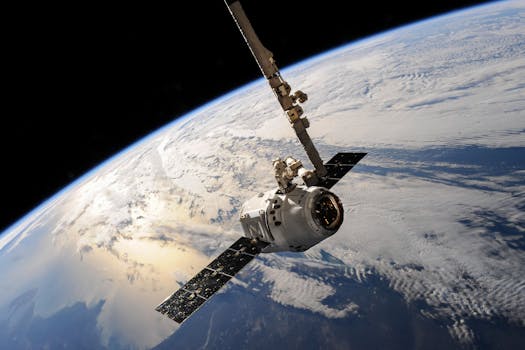GEO Satellites: Understanding the Technology and Applications of Geostationary Orbit Satellites
GEO satellites are a type of satellite that orbits the Earth at an altitude of approximately 36,000 kilometers, remaining stationary relative to a fixed point on the equator. They play a crucial role in various applications, including telecommunications, weather forecasting, and navigation.

GEO Satellites: Introduction to Geostationary Orbit Satellites
GEO satellites, or geostationary orbit satellites, are a type of satellite that orbits the Earth at an altitude of approximately 36,000 kilometers, remaining stationary relative to a fixed point on the equator. This unique characteristic allows GEO satellites to continuously observe and communicate with a specific region of the Earth, making them an essential tool for various applications, including telecommunications, weather forecasting, and navigation.
The concept of geostationary orbit was first proposed by science fiction writer Arthur C. Clarke in 1945, and the first GEO satellite, Syncom 2, was launched in 1963. Since then, hundreds of GEO satellites have been launched, providing a wide range of services, including television broadcasting, telecommunications, and weather forecasting.
How GEO Satellites Work
GEO satellites are designed to operate in the geostationary orbit, which is a circular orbit around the Earth at an altitude of approximately 36,000 kilometers. At this altitude, the satellite’s orbital period is equal to the Earth’s rotational period, which is 24 hours. This means that the satellite appears to remain stationary relative to a fixed point on the equator, allowing it to continuously observe and communicate with a specific region of the Earth.
GEO satellites are typically equipped with a variety of instruments, including transponders, antennas, and sensors. Transponders are used to receive and retransmit signals, while antennas are used to transmit and receive data. Sensors, such as cameras and spectrometers, are used to collect data about the Earth’s atmosphere, oceans, and land surfaces.
Applications of GEO Satellites
GEO satellites have a wide range of applications, including telecommunications, weather forecasting, and navigation. In telecommunications, GEO satellites are used to provide television broadcasting, internet connectivity, and mobile phone services. They are also used to provide backup communication services in case of natural disasters or other emergencies.
In weather forecasting, GEO satellites are used to collect data about the Earth’s atmosphere and oceans. They can detect changes in cloud patterns, sea surface temperatures, and atmospheric conditions, allowing meteorologists to predict weather patterns and issue warnings for severe weather events.
In navigation, GEO satellites are used to provide location information and timing signals. They are an essential component of the Global Positioning System (GPS), which provides location information to GPS receivers on the ground.
Future of GEO Satellites
The future of GEO satellites is promising, with new technologies and applications being developed. One of the most significant advances is the development of high-throughput satellites (HTS), which can provide faster and more reliable internet connectivity. HTS satellites use multiple spot beams to provide high-speed internet services to a large number of users, making them ideal for applications such as broadband internet access and mobile phone services.
Another area of development is the use of GEO satellites for Earth observation. New instruments and sensors are being developed to collect data about the Earth’s atmosphere, oceans, and land surfaces. These data can be used to monitor climate change, track natural disasters, and predict weather patterns.
In conclusion, GEO satellites are a vital component of modern telecommunications, weather forecasting, and navigation. Their unique characteristic of remaining stationary relative to a fixed point on the equator makes them an essential tool for various applications. As new technologies and applications are developed, the future of GEO satellites looks promising, with new opportunities for growth and innovation.